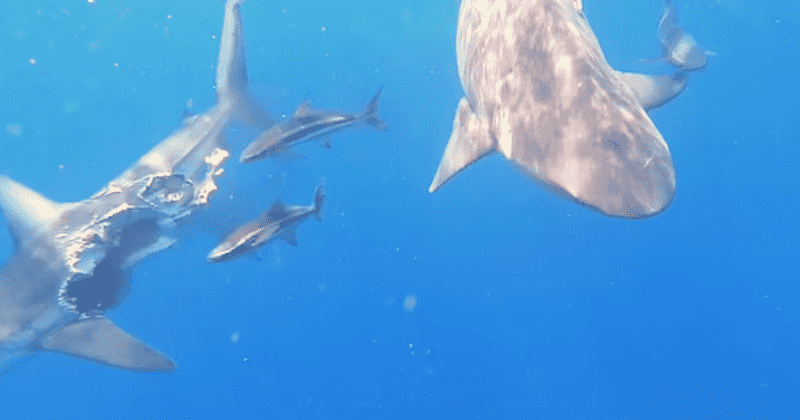Chilling video shows half-eaten zombie shark hunting despite attack by other sharks

A scientist has captured disturbing footage of a shark continuing to hunt for prey despite missing a huge portion of its body. The beast was eventually eaten in an act of shark-on-shark cannibalism, which is apparently a "fundamental trait" in them.
Dr Mario Lebrato, 35, from Spain, was releasing a blacktip shark into the ocean when he witnessed the moment the beast was mauled in a vicious attack by his own kind. The scientist captured incredibly rare footage of the incident that took place off the shore of Mozambique, about one to two meters below the surface of the Indian Ocean, The Sun reported.
RELATED ARTICLES

Moments after Lebrato and his group released the shark into the water, a group of predators set upon it, biting off chunks from the beast's side. The researcher told the newspaper how the group included several bull sharks, with some weighing nearly 300 - 400 kilograms. However, Lebrato and his team were amazed when they saw the blacktip shark continuing to go after prey despite the attack and a huge chunk of its side missing. The beast reportedly struggled for around 20 minutes before succumbing to its injuries. “Sharks eat sharks, that is well known, but it is super difficult to film and document," Lebrato told The Sun.
Watch the video footage.
Rare images surfaced in 2019 showing the gory aftermath of a brutal battle between two cannibal Great White sharks. The disturbing photos supported theories that sharks often eat their own for food. "It's not just one rogue shark attacking other sharks or even one species of shark attacking other sharks. It's lots of different sharks turning on each other," Professor Mark Meekan, from the Australian Institute for Marine Science, said at the time.
According to the professor, these attacks have been on the rise partly because of the ways human beings are trying to protect themselves from the hungry predators in the sea. He explained that sharks hooked on nets and bated hook lines tend to send out distress signals which are picked up by rival predators looking for an easy meal. Dr Lebrato's shark was also attached to a hook, in this video.

Meanwhile, previous research has found that the apex predators have been cannibalizing each other for more than a millennium. According to The Sun, an examination of fossilized excrement taken from the prehistoric shark orthacanthus -- which swam the oceans 300 million years ago -- found it contained fossilized baby shark teeth. “Shark-on-shark predation is a fundamental trait,” Meekan explained. “Three-hundred million years ago these were cannibal sharks.”
According to the Daily Mail, some species of shark exhibit cannibalism right from the womb. For example, the female sand tiger shark has two wombs and often conceives six or seven embryos in each womb at once, but they only ever give birth to two shark pups at once. The discrepancy previously baffled scientists, but technological advances allowed them to discover that the embryos are often sired by different fathers at different times. This means that the oldest embryo can eat its siblings in the womb as soon as it develops eyes and teeth. "The oldest of the embryos develops teeth and eyes a little bit earlier and once it's got those things, it starts hunting and killing their siblings," Demian Chapman (CORR), from Florida International University, told the newspaper. "So they are cannibals before birth which is really wild."










